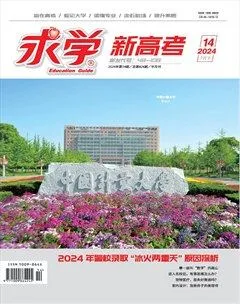如何从工作中的谈话获益?
Successful workplaces are usually characterised by good communication. Bosses provide a clear sense of where they want the firm to go; employees feel able to voice disagreements; colleagues share information rather than hoarding it. But being a good communicator is too often conflated with one particular skill: speaking persuasively.
In a paper published in 2015, Kyle Brink of Western Michigan University and Robert Costigan of St John Fisher College found that 76% of undergraduate business degrees in America had a learning goal for presentation skills, but only 11% had a goal related to listening. Business students were being schooled to give TED talks rather than have conversations. That may have costs.
Recent research by Beau Sievers of Stanford University and his co-authors asked groups of MBA students to discuss the meaning of ambiguous film clips. The presence of people perceived to be of high status seemed to impede consensus(共识): these folk spoke more and were readier to reject the explanations of others. Groups that reached consensus were more likely to have a different character in them: people who were well-connected but not dominant, who asked lots of questions and who encouraged interaction. They made everything align—even the neural activity of their groups.
Mr Duhigg looks at how some people forge stronger connections with others and at the techniques for having better conversations. His canvas ranges more widely than the workplace but some of its lessons are applicable there.
Mr Duhigg describes an approach called “looping for understanding”, in which people ask questions and then repeatedly distil their understanding of what they have heard back to their interlocutor.
Polarised beliefs of this sort are rare inside firms. Looping techniques still have their place: when there are long-running conflicts between individual employees, say, or in negotiations and mediation processes.
Mr Duhigg’s advice can seem a useful reminder. Asking questions, not cutting people off, pausing to digest what someone has said rather than pouncing on breaks in a discussion to make your own point. And in plenty of organisations they would still represent good progress.
(材料来自The Economist,有删改)
1. What does the underlined word “hoarding” in paragraph 1 probably mean?
A. Giving away. B. Storing up.
C. Using up. D. Taking away.
2.What can be learnt about the paper published in 2015?
A. Only one person’s finding is included in it.
B. Most business students needn’t grasp presentation skills.
C. Over 11% business students had a goal related to listening.
D. Business students attach great importance to TED talks.
3. What is the main idea of the third paragraph?
A. The purpose of the research.
B. The process of the research.
C. The finding of the research.
D. The meaning of the research.
4. What is the author’s attitude towards Mr. Duhigg’s approach?
A. Approving. B. Objective.
C. Doubtful. D. Unknown.
1.B。解析:词义猜测题。材料第一段画线词所在的句子的大意为“老板清楚地知道他们希望公司走向何方;员工觉得能够表达不同意见;同事们分享信息而不是囤积信息”。 由此可知,“hoarding”应有“囤积、储存”之意。B选项“正在存储”与材料内容相符,故选B。
2.D。解析:推理判断题。材料第二段的第二句提到“商学院的学生被要求做TED演讲,而不是进行对话”,D选项“商科学生非常重视TED演讲”与材料内容相符,故选D。
3.C。解析:主旨大意题。材料第三段共有四句话,第一句介绍了所做的是何种研究,后三句分别讲述了研究的不同发现。由此可知,这段材料的主旨是研究的发现。C选项“研究的发现”与材料内容相符,故选C。
4. A。解析:观点态度题。材料倒数第二段提到“循环技术仍然有自己的一席之地:比如当个别员工之间存在长期冲突时,或者在谈判和调解过程中时”。由此可见,作者对Duhigg先生的循环技术持肯定态度,故选A。

